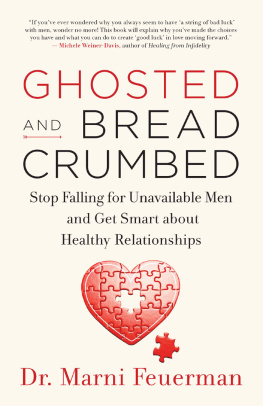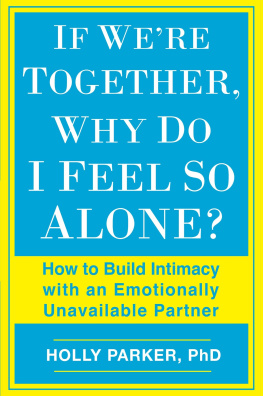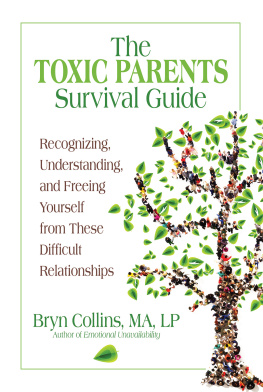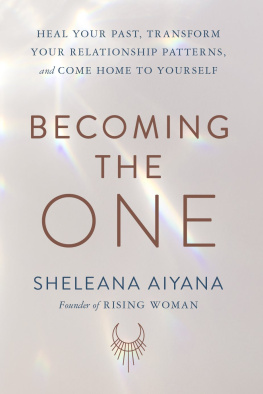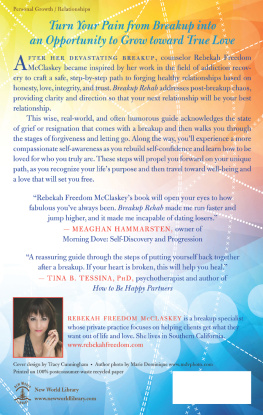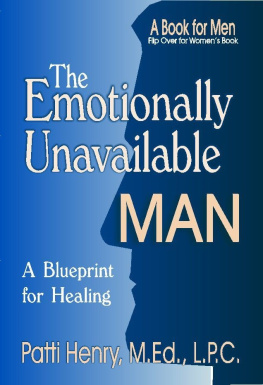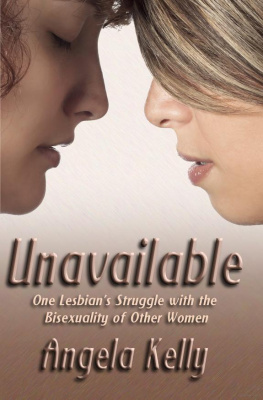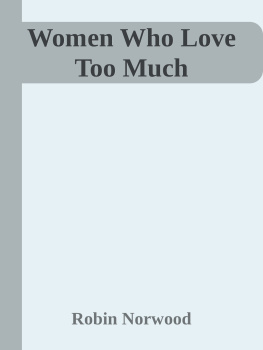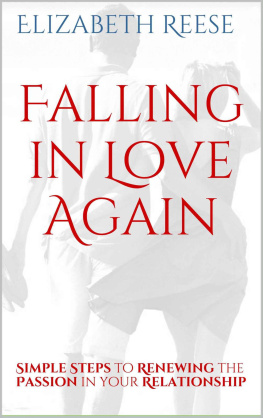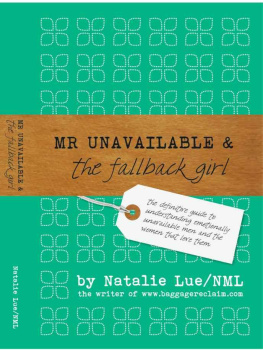Table of Contents
Guide
Page List
F irst and foremost, I thank my husband, Michael, who has proved that an emotional and loving connection can thrive when one chooses the right life partner. I am forever grateful for my two daughters, Jamie and Mandy, who, along with my husband, have been my cheerleaders throughout this book-writing journey. Also, my friends and family, too many to list, have been deeply supportive and have shown genuine interest in my writing. I am profoundly grateful to have all these people in my life.
The idea for the premise of this book arose during my media psychology course in my doctoral program. My book proposal was written under the guidance of Dr. Jonathan Rich, who predicted early on that I might really have something here! I am thankful for his positive words and for his taking the time to review my proposal and provide feedback. He also directed me to the invaluable resources necessary for transforming the proposal into a real live book.
I am especially thankful for my agent, MaryAnn Karinch, of the Rudy Agency, for her expertise and for taking a chance on representing me and my book. She believed in this project and worked hard to find a publisher so that this book would become a reality.
I also thank the staff at New World Library and my editor, Georgia Hughes, for taking a chance on a first-time author. Her wisdom, guidance, expert feedback, and insights have been invaluable to me in the writing of this book. I am incredibly appreciative of copyeditor Bonita Hurds thorough and insightful edits and suggestions as well.
As this book evolved from idea to proposal to full-length manuscript, there were several draft editors along the way. I thank Hannah Eason, Ralph Hickok, Hilary Gunning, and Liz Seif, for helping refine the material. I am also thankful for the help of my colleague Cina Hoey, LCSW, for offering to be a beta reader and providing valuable feedback.
My freelance writing (and now authoring) would not have been possible without some of the platforms that provided national exposure. In this regard, I especially thank Melanie Gorman, senior vice president, along with the staff, of YourTango media for expert coaching and guidance.
I learned to do my work as a clinician over the course of many, many years, through much reading and formal education. However, it has also been inspired, molded, and refined by two gifted clinicians: Michael Barnett, LPC, and Dr. Jennifer Leigh. Thank you for mentoring and guiding me to become a better clinician myself over the past few years. I also thank my colleague and friend Jessica Marchena, LMHC, for other work-project collaboration and stimulating conversation on emotionally focused couples therapy and beyond.
Finally, I am indebted to the numerous clients who have trusted me to help them heal their pain and find serenity and love. Their sharing provided a way for the psychological concepts in this book to come to life to help countless other people. It has been an honor to be their therapist and, many times, their secure attachment figure.
D r. Marni Feuerman is a licensed clinical social worker and a licensed marriage and family therapist. She holds a masters degree in social work and a doctorate in psychology. She maintains a private practice in the South Florida area, where she lives with her husband and twin daughters. The focus of her clinical work includes relationship problems, marriage, infidelity, dating, and divorce. She has specialized training in evidence-based couples therapy and conducts workshops as well as therapy intensives. As a nationally recognized relationship and marriage expert, she has made contributions to and written articles for countless online media outlets. Dr. Feuerman is passionate about helping her clients work through their relationship struggles to find love and emotional connection. For more about this book and the author, visit www.drmarnionline.com.
T he following are recommended resources on some topics discussed in this book that you may wish to gain further knowledge about. This list is by no means exhaustive.
Books
Addiction and Codependency
Beattie, Melody. Codependent No More: How to Stop Controlling Others and Start Caring for Yourself. Center City, MN: Hazelden, 1992.
Mellody, Pia, Andrea Wells Miller, and Keith Miller. Facing Love Addiction: Giving Yourself the Power to Change the Way You Love. San Francisco: Harper, 2003.
Norwood, Robin. Women Who Love Too Much: When You Keep Wishing and Hoping Hell Change. New York: Simon & Schuster, 1986.
Attachment
Karen, Robert. Becoming Attached: First Relationships and How They Shape Our Capacity to Love. New York: Oxford University Press, 1994.
Lovenheim, Peter. The Attachment Effect: Exploring the Powerful Ways Our Earliest Bond Shapes Our Relationships and Lives. New York: TarcherPerigee, 2018.
Dating
Levine, Amir, and Rachel Heller. Attached: The New Science of Adult Attachment and How It Can Help You Find and Keep Love. New York: Penguin, 2012.
Tatkin, Stan. Wired for Dating: How Understanding Neurobiology and Attachment Style Can Help You Find Your Ideal Mate. Oakland, CA: New Harbinger, 2016.
Emotion
Barrett, Lisa Feldman. How Emotions Are Made: The Secret Life of the Brain. New York: Houghton Mifflin Harcourt, 2017.
Goleman, Daniel. Emotional Intelligence: Why It Can Matter More Than IQ. New York: Bantam, 2006.
Family Dysfunction
Black, Claudia. It Will Never Happen to Me: Growing Up with Addiction as Youngsters, Adolescents, Adults. Center City, MN: Hazelden, 2002.
Forward, Susan, and Craig Buck. Toxic Parents: Overcoming Their Hurtful Legacy and Reclaiming Your Life. New York: Bantam, 2001.
Love
Fisher, Helen. Why We Love: The Nature and Chemistry of Romantic Love. New York: Henry Holt, 2004.
Johnson, Sue. Love Sense: The Revolutionary New Science of Romantic Relationships. New York: Little, Brown, 2013.
Relationships
Johnson, Sue. Hold Me Tight: Seven Conversations for a Lifetime of Love. New York: Little, Brown, 2008.
Tatkin, Stan. Wired for Love: How Understanding Your Partners Brain and Attachment Style Can Help You Defuse Conflict and Build a Secure Relationship. Oakland, CA: New Harbinger, 2012.
Vulnerability
Brown, Bren. Daring Greatly: How the Courage to Be Vulnerable Transforms the Way We Live, Love, Parent, and Lead. New York: Penguin, 2015.
Workbooks
Hay, Louise. Love Yourself, Heal Your Life Workbook. Insight Guide.
Carlsbad, CA: Hay House, 1990.
Hayes, Steven. Get out of Your Mind & into Your Life: The New Acceptance & Commitment Therapy. Oakland, CA: New Harbinger, 2005.
McKay, Matthew, Patrick Fanning, and Patricia Zurita Ona. Mind and Emotions: A Universal Treatment for Emotional Disorders. Oakland, CA: New Harbinger, 2011.
McKay, Matthew, Jeffrey Wood, and Jeffrey Brantley. The Dialectical Behavior Therapy Skills Workbook: Practical DBT Exercises for Learning Mindfulness, Interpersonal Effectiveness, Emotion Regulation and Distress Tolerance. Oakland, CA: New Harbinger, 2010.
Schirladi, Glenn. The Self-Esteem Workbook. Oakland, CA: New Harbinger, 2016.
Stahl, Bob, and Elisha Goldstein. A Mindfulness-Based Stress Reduction Workbook. Oakland, CA: New Harbinger, 2010.
24 Ways to Put Your Strengths to Work. VIA Blog, January 21, 2016. www.viacharacter.org/blog/24-ways-to-put-your-strengths-to-work/.
Adverse Childhood Experiences. Substance Abuse and Mental Health Services Administration. Updated September 5, 2017. www.samhsa.gov/capt/practicing-effective-prevention/prevention-behavioral-health/adverse-childhood-experiences.

